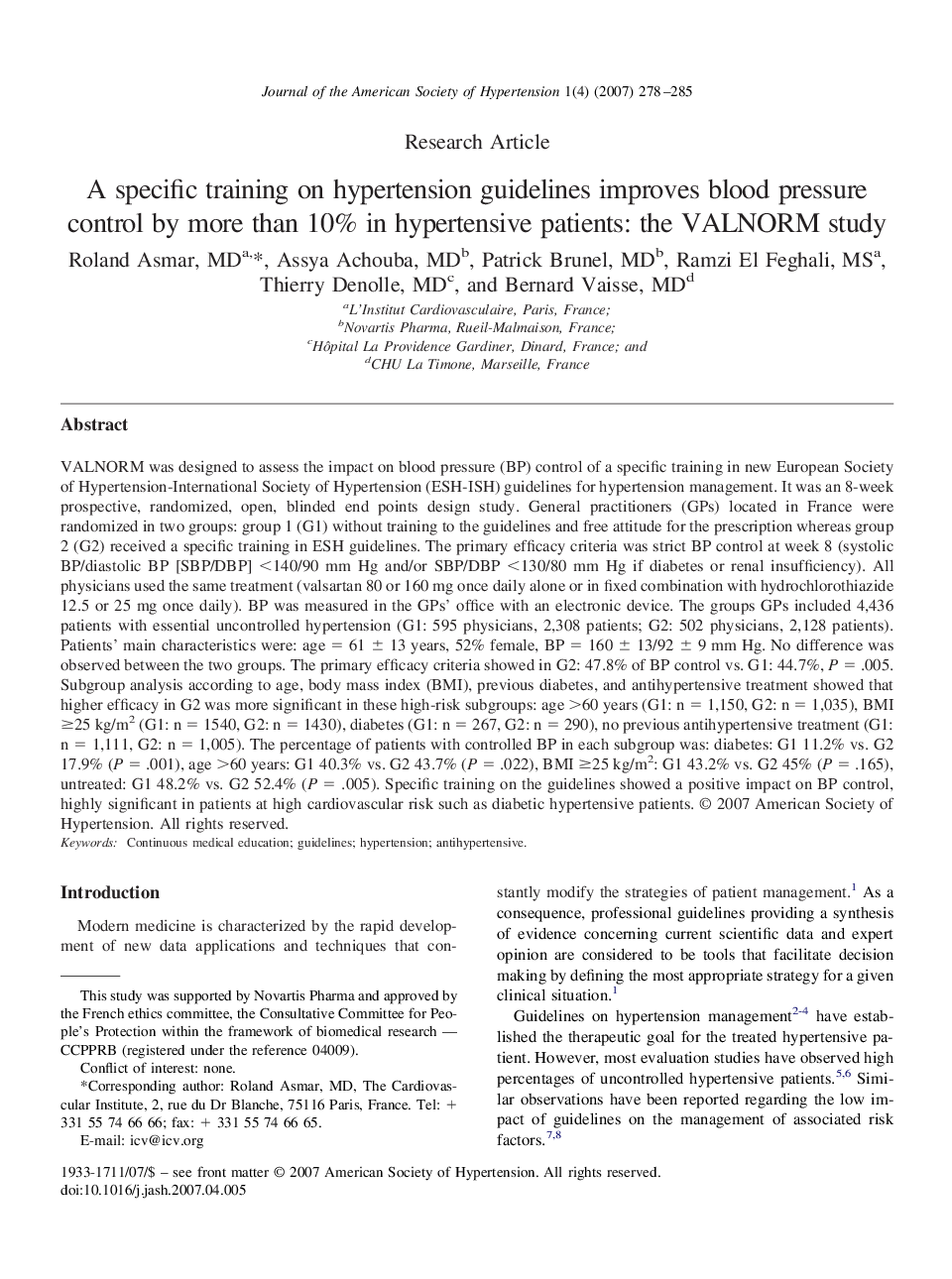| Article ID | Journal | Published Year | Pages | File Type |
|---|---|---|---|---|
| 2957257 | Journal of the American Society of Hypertension | 2007 | 8 Pages |
VALNORM was designed to assess the impact on blood pressure (BP) control of a specific training in new European Society of Hypertension-International Society of Hypertension (ESH-ISH) guidelines for hypertension management. It was an 8-week prospective, randomized, open, blinded end points design study. General practitioners (GPs) located in France were randomized in two groups: group 1 (G1) without training to the guidelines and free attitude for the prescription whereas group 2 (G2) received a specific training in ESH guidelines. The primary efficacy criteria was strict BP control at week 8 (systolic BP/diastolic BP [SBP/DBP] <140/90 mm Hg and/or SBP/DBP <130/80 mm Hg if diabetes or renal insufficiency). All physicians used the same treatment (valsartan 80 or 160 mg once daily alone or in fixed combination with hydrochlorothiazide 12.5 or 25 mg once daily). BP was measured in the GPs’ office with an electronic device. The groups GPs included 4,436 patients with essential uncontrolled hypertension (G1: 595 physicians, 2,308 patients; G2: 502 physicians, 2,128 patients). Patients’ main characteristics were: age = 61 ± 13 years, 52% female, BP = 160 ± 13/92 ± 9 mm Hg. No difference was observed between the two groups. The primary efficacy criteria showed in G2: 47.8% of BP control vs. G1: 44.7%, P = .005. Subgroup analysis according to age, body mass index (BMI), previous diabetes, and antihypertensive treatment showed that higher efficacy in G2 was more significant in these high-risk subgroups: age >60 years (G1: n = 1,150, G2: n = 1,035), BMI ≥25 kg/m2 (G1: n = 1540, G2: n = 1430), diabetes (G1: n = 267, G2: n = 290), no previous antihypertensive treatment (G1: n = 1,111, G2: n = 1,005). The percentage of patients with controlled BP in each subgroup was: diabetes: G1 11.2% vs. G2 17.9% (P = .001), age >60 years: G1 40.3% vs. G2 43.7% (P = .022), BMI ≥25 kg/m2: G1 43.2% vs. G2 45% (P = .165), untreated: G1 48.2% vs. G2 52.4% (P = .005). Specific training on the guidelines showed a positive impact on BP control, highly significant in patients at high cardiovascular risk such as diabetic hypertensive patients.
